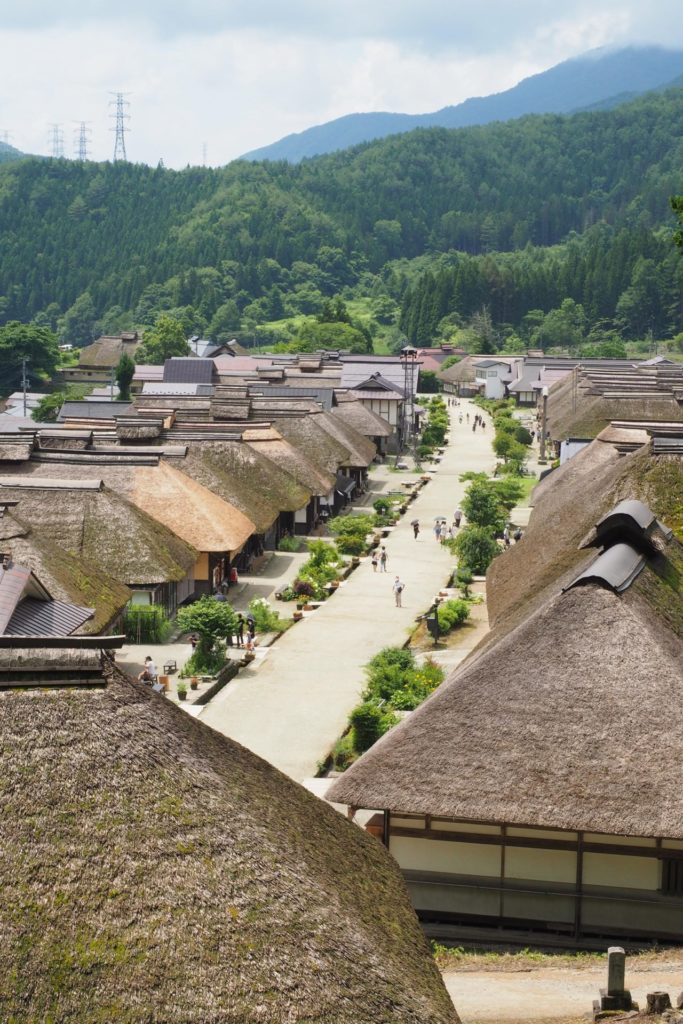The 100-Yen Wonderland
Top Image: Irasutoya
I hate to shop. Mind you, I like getting new and exciting things, but I dislike the idea of having to go to a store and walk around looking at things and having to decide what to get. However, shopping at a Daiso in Japan is something different for me. It is like I’ve been transported to another dimension. No joke! Daiso is one of couple 100-Yen stores or “Dollar Stores” that can be found all over Japan. Much like second-hand shops, 100-Yen stores are a Japan newcomer’s best friend.
At Daiso, most products are sold for, you guessed it, 100 Yen (plus tax). Each Daiso store houses over 50,000 products on average and ranges in categories such as household, beauty, grocery, stationary, car-care, gardening and more. Having been transported into this rabbit hole of things I want, things I need and things I just feel it would be fun to have, here’s a list of items I recommend you get from your local Daiso store in Japan!
Stationary
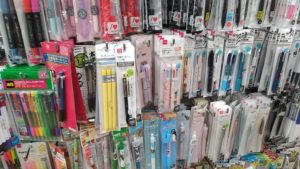 It’s hard to select just a single item from this category, so I will suggest the entire stationary section for our first list of items. There are a lot of bookstores in Japan where you can buy stationary. However, when shopping at Daiso, you get just about the same quality of products at much cheaper prices.
It’s hard to select just a single item from this category, so I will suggest the entire stationary section for our first list of items. There are a lot of bookstores in Japan where you can buy stationary. However, when shopping at Daiso, you get just about the same quality of products at much cheaper prices.
I’ve never gone to a Daiso store without buying something from the stationary aisle(s). You will always find something you just have to get, from pencil points for your mechanical pencil to whiteboards of varying sizes.
Cleaning Products
 This is another category that’s hard to just pick one product from, so I’m suggesting the entire lot. Daiso has a wide range of cleaning products for just about everything and everywhere that requires cleaning. Products for cleaning your bathroom, kitchen, floor, car or even your body!
This is another category that’s hard to just pick one product from, so I’m suggesting the entire lot. Daiso has a wide range of cleaning products for just about everything and everywhere that requires cleaning. Products for cleaning your bathroom, kitchen, floor, car or even your body!
What’s also amazing is that there is no guessing if you can use a product to clean a particular thing or surface because most of their cleaning supplies are surface-specific, and clearly labeled as such. For example, they have cleaning pads specifically for wooden floors, refrigerators, ceramic tops, wooden counter tops, and so much more.
Toilet Air Freshener
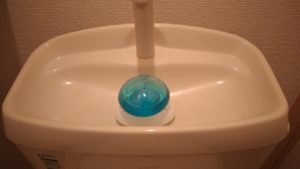 These aren’t just ordinary air fresheners. Yes, they have those as well, but these are just super handy and cute. Because of how Japanese toilets are built, this air freshener/cleaner uses the water used to refill the tank to dispense the liquid inside. Plus, they sell refill packs. “Sugoi ne!” indeed!
These aren’t just ordinary air fresheners. Yes, they have those as well, but these are just super handy and cute. Because of how Japanese toilets are built, this air freshener/cleaner uses the water used to refill the tank to dispense the liquid inside. Plus, they sell refill packs. “Sugoi ne!” indeed!
Plushy Toys
 If you live in Japan or have any idea about Japan then you’re likely aware of Japan’s cute culture. Hence, your home, car, handbag or backpack wouldn’t be complete without a cute plushy toy. Of course, I just had to get a couple for my car, home and backpack. Some even double as pillows!
If you live in Japan or have any idea about Japan then you’re likely aware of Japan’s cute culture. Hence, your home, car, handbag or backpack wouldn’t be complete without a cute plushy toy. Of course, I just had to get a couple for my car, home and backpack. Some even double as pillows!
Light-up Mirror
 This next product was just a lucky find that I am still super proud of. It’s a light-up mirror. It’s super handy. Yes, my bathroom sink has a mirror and proper lighting. But with this bad boy, I can sit somewhere like on the balcony and shave. Voila! I have a mirror, proper lighting and as a bonus I don’t have a messy bathroom sink to clean.
This next product was just a lucky find that I am still super proud of. It’s a light-up mirror. It’s super handy. Yes, my bathroom sink has a mirror and proper lighting. But with this bad boy, I can sit somewhere like on the balcony and shave. Voila! I have a mirror, proper lighting and as a bonus I don’t have a messy bathroom sink to clean.
Fake (or Real!) Plants
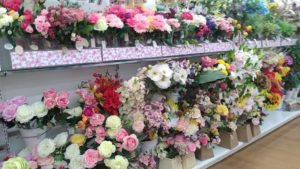 If you live in apartment, you might not have the luxury of being able to plant flowers on the property or even have garden space. At Daiso you can find fake or really beautiful real flowers to beautify your home.
If you live in apartment, you might not have the luxury of being able to plant flowers on the property or even have garden space. At Daiso you can find fake or really beautiful real flowers to beautify your home.
On my first trip to Daiso, I actually bought a real plant to beautify my apartment, have something to take care of and just to add a little life to my apartment. The fake plants aren’t half bad though, and you won’t have to worry about watering them!
Savings Cans
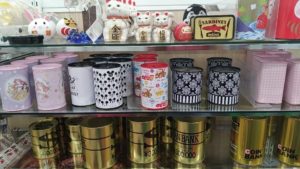 If you do not know Japanese currency, here’s a quick breakdown of their money; 1, 5, 10, 50, 100 and 500 are in coins and 1000, 5000 and 10000 are in notes. Saving is an important life hack and these saving cans make that process relatively easy. With saving cans from Daiso, you know you which currency to save and how much you’ll get based on the can you purchase.
If you do not know Japanese currency, here’s a quick breakdown of their money; 1, 5, 10, 50, 100 and 500 are in coins and 1000, 5000 and 10000 are in notes. Saving is an important life hack and these saving cans make that process relatively easy. With saving cans from Daiso, you know you which currency to save and how much you’ll get based on the can you purchase.
Space Savers
 I think this can be categorized as a type of item, even if its purposes is to store other items! There are space savers for many different areas. I’ve bought space savers for my kitchen draws, my closet, inside my car, or for little items I sometimes use and just need an area for them. Being in Daiso and seeing all these products might cause you to buy space savers for your space savers!
I think this can be categorized as a type of item, even if its purposes is to store other items! There are space savers for many different areas. I’ve bought space savers for my kitchen draws, my closet, inside my car, or for little items I sometimes use and just need an area for them. Being in Daiso and seeing all these products might cause you to buy space savers for your space savers!
Puzzle Mats
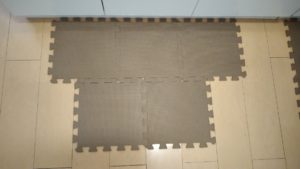 You can’t use these mats everywhere (I would not recommend them on tatami) but they are perfect for hard surfaces where you will stand for a long time. For example, I use these inside my kitchen where I stand by the stove and kitchen sink for extended periods. They are also easy to clean (and easier to replace in case of accidents!)
You can’t use these mats everywhere (I would not recommend them on tatami) but they are perfect for hard surfaces where you will stand for a long time. For example, I use these inside my kitchen where I stand by the stove and kitchen sink for extended periods. They are also easy to clean (and easier to replace in case of accidents!)
Manual Vegetable Shredder
This was a good buy from my local Daiso. It’s so practical; instead of chopping vegetables or seasoning on a chopping block, I can just put them in this product and pull the string a couple times. Like magic, my vegetables/seasoning are shredded.
Which one of these products did you like the best? Daiso is somewhere you definitely want to go if you visit Japan, but it’s a must if you live in Japan. There’s range of products at very, very, very low prices and the quality is shockingly good. Along with the items/categories mentioned, this treasure trove has something for everyone. So, what are you waiting for? Have fun while shopping and enjoy this wonderland of products without worrying about costs!
Photo Credits:
Top Image: Irasutoya
Previous Version: Kuha455405 licensed under the Creative Commons Attribution-Share Alike 3.0 Unported license. Wikimedia Commons Link
Additional photos provided by Kedon Henry
All other content (text) created by the original author and © 2021 MUSUBI by Borderlink
Top image by smith3 via pixabay.com
There are 47 Prefectures in Japan. Here is a brief glimpse at one of them!
Fukushima Prefecture
The third-largest prefecture in Japan, Fukushima is located to the the south of Miyagi and Yamagata, east of Niigata, and north of Gunma, Tochigi and Ibaraki Prefectures. It is the southernmost part of the Tōhoku region of Japan, and a land both rich in history and nature.
To most outside Japan, Fukushima is synonymous with the 2011 Tōhoku earthquake and tsunami due to the nuclear power plant disaster that occurred there. But in the decade since, Fukushima has risen from the ashes on the path back towards its place as one of Japan’s premier travel destinations. From traditional thatched huts in Aizuwakamatsu to the mighty splendor of Lake Inawashiro, there’s no shortage of sights to see, and they’re worth your time to visit.
The beauty and variety of Fukushima’s scenery is captured below:
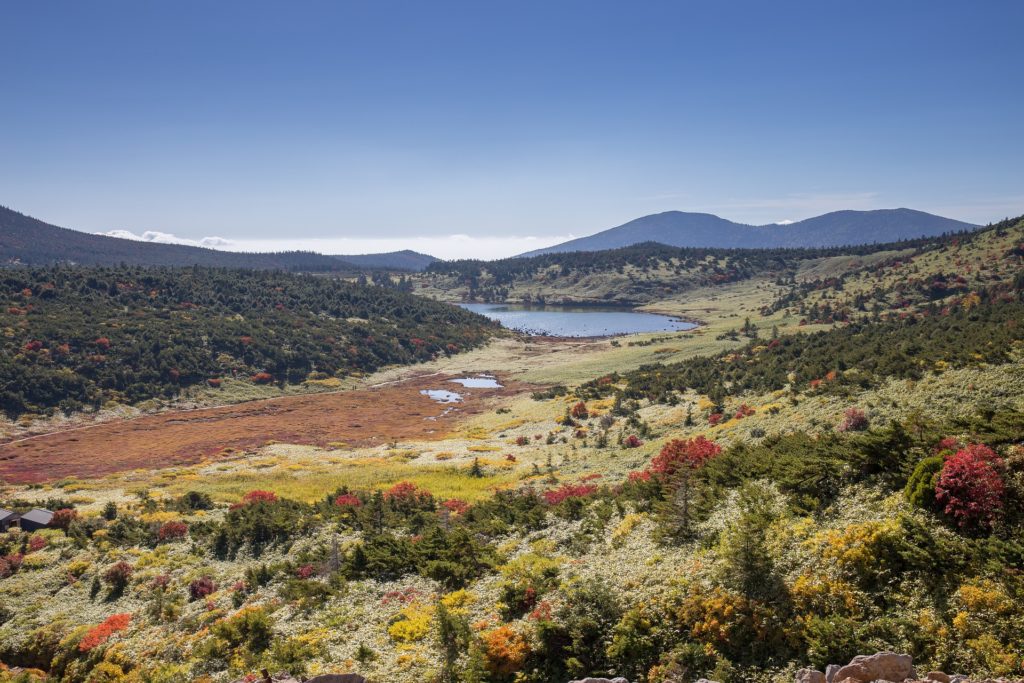
Kamanuma near Mount Azuma. Photo by AG2016.
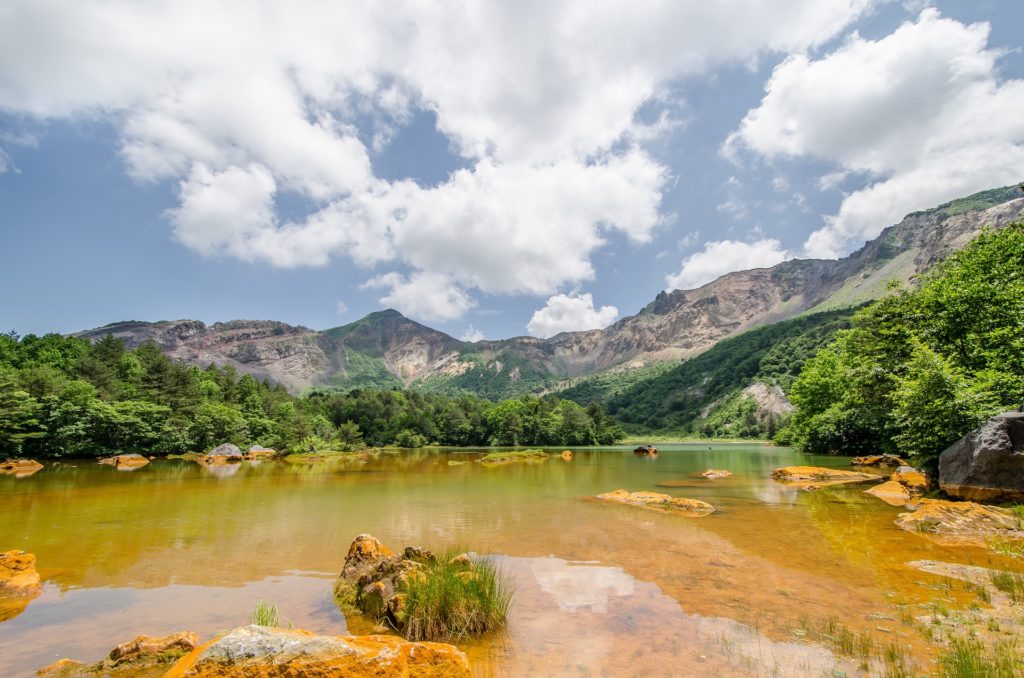
Pond near Mount Bandai. Photo by AG2016.
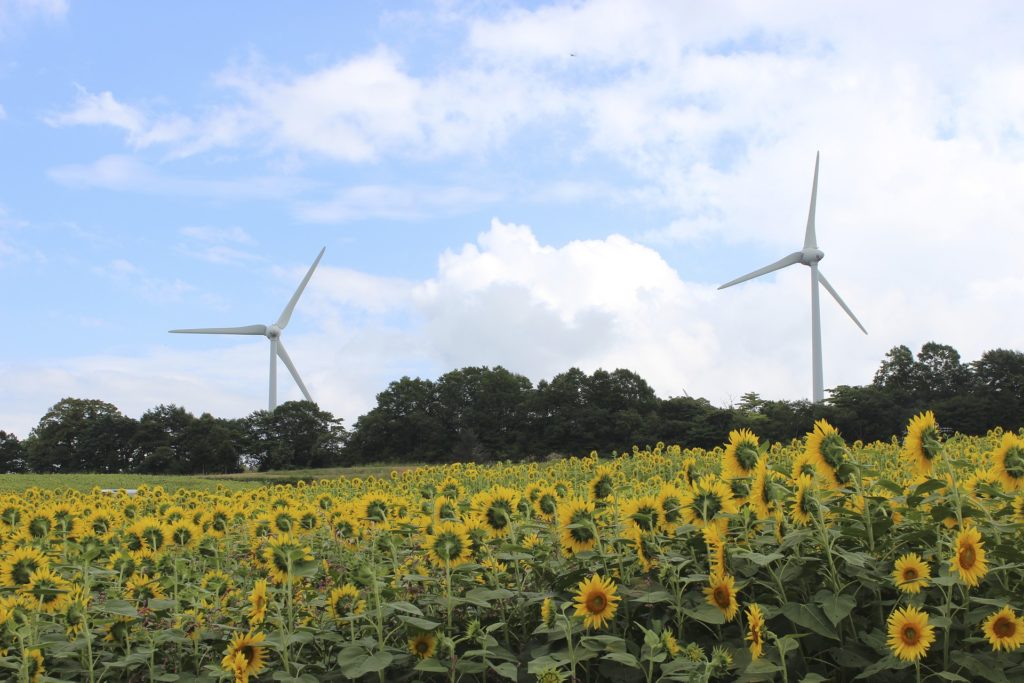
Nunobiki Plateau Wind Farm. Photo by Punch_ra
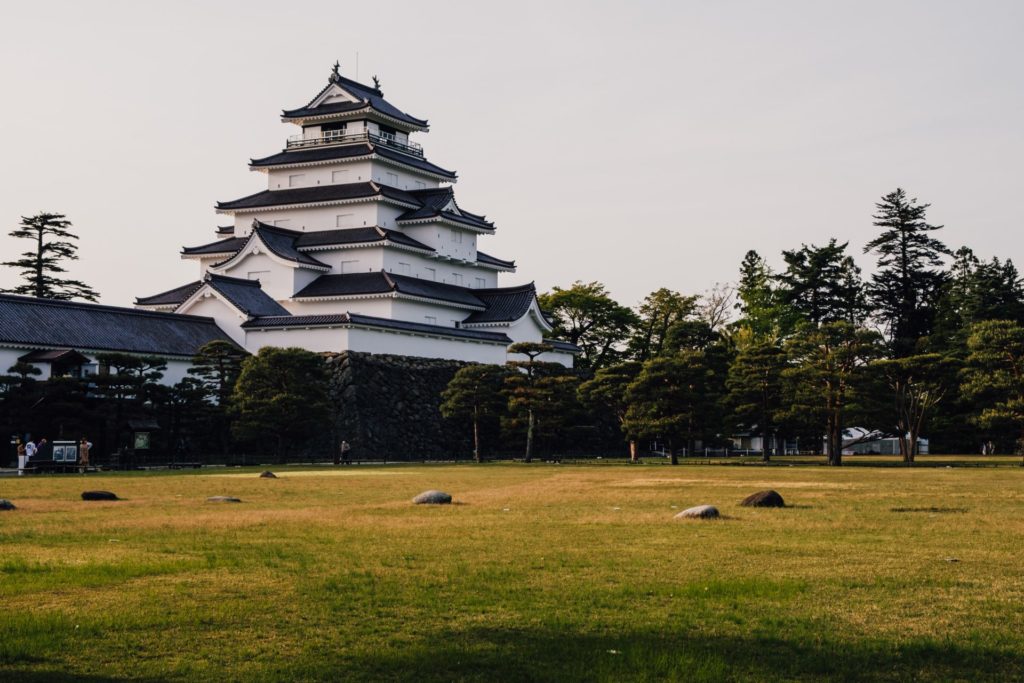
Tsuruga-jo (Aizu-Wakamatsu) Castle. Photo by Kentaro Toma on Unsplash
Go Beyond
For more about interesting sights to see there, see our previous articles about Fukushima on MUSUBI!
Good Fortune & Great Sights in Aizu
Mind Detoxifying Places in Tohoku
Photo Credits:
All photos used in this article are free to use under the Unsplash and Pixabay license.
Top image by smith3 via pixabay.com
All other content (text) created by the original author and © 2021 MUSUBI by Borderlink
Top Photo: Ocdp used under the Creative Commons CC0 1.0 Universal Public Domain Dedication. Wikimedia Commons Link
Do you think living in Japan is expensive? Well, here’s one of the best “Shufu” (主婦) or housewife tips for you!
Traditionally in Japan it is the wife who manages the household finances. The stereotypical image that results is that she is constantly trying to find ways to save money.
There was a time when Japan had what was called “Sengyou shufu” (専業主婦) or full-time housewives. Nowadays many married women with children have jobs so things are changing, but there are stull many who adopt the full-time housewife lifestyle. This extends to maximizing the most out of your monthly budget, and what better place to start than at the dinner table?
Rice pack + curry pouch + pork cutlet = delicious Japanese-style curry!
Anyway, back to saving money. The best place to save money on groceries is a kind of supermarket called “Gyoumu Super” (業務スーパー). I truly love it there. Things are so much cheaper than in any other supermarket. Another thing I love (as many at MUSUBI do) is curry! A Japanese-style curry and rice meal with “Tonkatsu” (とんかつ) or deep-fried pork cutlets costs about 1000 yen at a restaurant. Why would you pay that when you can put the meal together yourself for 388 yen?
All you need to do is go to Gyoumu Super, get a pack of microwavable rice for 70 yen each and a pack of ready-made curry pouch for 60 yen each. Get some deep-fried pork cutlets from the local supermarket for 258 yen and you have yourself a delicious Japanese meal for 388 yen! Note, however, that the rice packs and curry pouches are usually sold in packs of three or five. That means you can have the meal three or five times, which is great!
Further Deals at the Gyoumu Super
I haven’t finished with Gyoumu Super yet. It really is super! I bought one kilogram (yes, one KG) of coffee jelly there the other day. It comes in a carton like a carton of milk which is cool. It only cost me 170 yen! And it was delicious! It tasted the same as the coffee jelly I had at Jonathon’s (a popular family restaurant chain). It says it’s for 7-8 people so that works out to be about 23 yen per person for dessert. If you have never tried coffee jelly, now’s your chance!
Gyoumu Supers also specializes in frozen foods and selling in large packs or containers, allowing you to buy in bulk easily. However, there are also fresh fruit and vegetables, a selection of fresh meat, milk, bread, and sometimes lots of imported food. I recommend you check it out. You might find something from your home country that you’ve been craving for, but at the very least you’ll be eating a little more cheaply. Have a great time saving money!
Photo Credits:
Top Photo: Ocdp used under the Creative Commons CC0 1.0 Universal Public Domain Dedication. Wikimedia Commons Link
All other content (text) created by the original author and © 2021 MUSUBI by Borderlink
Top photo: Engin_Akyurt on Pixabay
Skincare is an important aspect that most of us overlook when moving to a new country. Between finding an apartment, adjusting to a new job and worrying about the language barrier, skincare tends to be one of the things we think about the least.
Why? Because it usually tends to get buried under all the anxiousness and excitement we feel when working or living abroad for the first time. It may not be true to all, but most of us are guilty of this. Especially these days when maskne can be a real problem, taking care of our skin is more important than ever.
So here is perhaps one of the best guides you’ll need around Japanese skin care for both day and night. You’ve seen our summertime guide for mens’ products; this one covers products sold to women, although some can also be used be all.
2 years! That’s how much times I spent in building, understanding and trying different skincare routines using only Japanese products before I finally found the best ones that works for my non-Japanese skin. One of the most difficult parts for me was looking for a toner. I have a skin type that can be both oily and sensitive. Putting on even one wrong product tends to create havoc for my skin and causing a breakout.
Now, after using tons of both popular and lesser-known brands, here’s my ideal Japanese skincare routine. It does wonders for my skin, and will hopefully do the same for yours.
Perfect Whip and All Clear Oil (Day and Night)
 Double cleansing has never been this easy with the combination of an oil-based cleanser and a foamy cleanser, both by Senka. First, remove all of your cosmetics by using All Clear Oil. It’s a lightweight, deep cleansing oil that helps rid you of all dirt and tough-to-remove cosmetics such as eyeliner. Its formula includes naturally-derived silk cocoon essence, hyaluronic acid and rice bran oil, which is famous for clearing the pores.
Double cleansing has never been this easy with the combination of an oil-based cleanser and a foamy cleanser, both by Senka. First, remove all of your cosmetics by using All Clear Oil. It’s a lightweight, deep cleansing oil that helps rid you of all dirt and tough-to-remove cosmetics such as eyeliner. Its formula includes naturally-derived silk cocoon essence, hyaluronic acid and rice bran oil, which is famous for clearing the pores.
Next, use Perfect Whip for further deep cleansing. Perfect Whip itself has consistently been dubbed as one of the best foam cleansers in Japan. Its formula leaves your skin fresh without drying, which is perfect for Japan’s temperamental weather. No wonder it has a big cult following here! I personally only use Perfect Whip in the morning and night since I wear make-up whenever I go to work.
Kikimasamume Japanese Sake Lotion (Day)
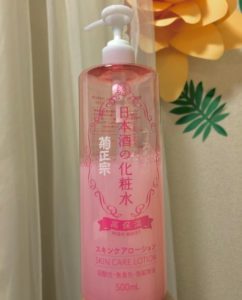 This Sake-based toner/lotion is suitable for all skin types, is alcohol-free and has a slightly acidic formula that helps the skin retain its moisture. It helps to hydrate, brighten and most especially it’s a lightweight formula doesn’t leave your face with a heavy or sticky feel.
This Sake-based toner/lotion is suitable for all skin types, is alcohol-free and has a slightly acidic formula that helps the skin retain its moisture. It helps to hydrate, brighten and most especially it’s a lightweight formula doesn’t leave your face with a heavy or sticky feel.
What I love most about this is it can be used both by men and women. Aside from being a toner, this can also be used all over your body, especially during winter when the weather may make your skin dry.
Shiseido Anissa Perfect UV Sunscreen (Day and Night)
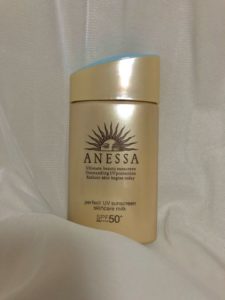 This is my holy grail when it comes to sunscreens. It has the perfect coverage against both UVB and UVA and boasts of an SPF50+. It contains silicones and antioxidants such as Vitamin E & Camellia Sinensis.
This is my holy grail when it comes to sunscreens. It has the perfect coverage against both UVB and UVA and boasts of an SPF50+. It contains silicones and antioxidants such as Vitamin E & Camellia Sinensis.
Although I have oily skin, this sunscreen is quickly absorbed and doesn’t leave any white casts, unlike the other brands I’ve tried before. It also works well with the other cosmetics I use on my skin afterwards.
It is also a combination of both physical and chemical sunscreens, which works better for my skin. I have tried chemical-based sunscreens before, but they were too strong. This one hits that “just right” spot!
Labo-Labo Super Keana Lotion (Night)
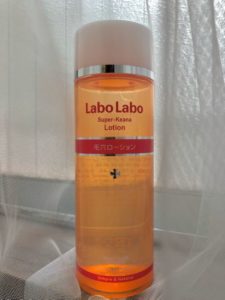 After deep-cleansing at night, I usually change my toner to this one: Labo Labo Super Keana Lotion. It’s a spectacular product if you are a beginner in using AHA-based toners, and it’s very gentle for everyday use. AHA helps you get a faster skin turn-over and pore minimization.
After deep-cleansing at night, I usually change my toner to this one: Labo Labo Super Keana Lotion. It’s a spectacular product if you are a beginner in using AHA-based toners, and it’s very gentle for everyday use. AHA helps you get a faster skin turn-over and pore minimization.
I was introduced to this product by one of my favorite Asian beauty Japanese YouTubers. After using it once, I never went back.
VITACOS 20 Power C Serum
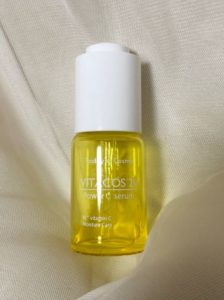 When it comes to Vitamin C Serums, VITACOS20 is what I use and recommend the most. It contains moisturizers and high-penetrating Vitamin C. This helps your skin retain its moisture, especially during winter.
When it comes to Vitamin C Serums, VITACOS20 is what I use and recommend the most. It contains moisturizers and high-penetrating Vitamin C. This helps your skin retain its moisture, especially during winter.
As with Vitamin C serums, this also helps prevent wrinkles. It’s great for areas where hyperpigmentation occurs. Personally, I don’t use it often during summer due to its thick feeling. What I like most about it is that is cruelty-free (not tested on animals; always a good point to consider when choosing beauty products.)
Note that all the products listed above are only ‘personal’ recommendations. Each product may react differently due to different skin types or skin combinations. It is still recommended to test a product first before continued use, and to immediately stop from using it when it causes adverse effect on your skin. Good luck, be daring, and hopefully you’ll look and feel your best!
Photo Credits:
Top photo: Engin_Akyurt on Pixabay (follow them on Instagram!)
All additional images for this article were provided by Zygel Doll Jamelano.
All other content (text) created by the original author and © 2021 MUSUBI by Borderlink
Interested in seeing goldmines, spirited taiko drumming performances, and riding in wooden washtubs? Then book yourself a trip to Sado Island, Niigata!
A lesser-known island getaway, Sado Island is located just two hours east from Niigata City’s coast. Long ago, the island was once a place of exile. But when gold was discovered at the turn of the 17th century, the sleepy island’s fate changed forever. Now, Sado Island is one of Japan’s biggest tourist attractions. Don’t be deterred by the cold north! A spring or summer visit to Sado will surely delight your senses!
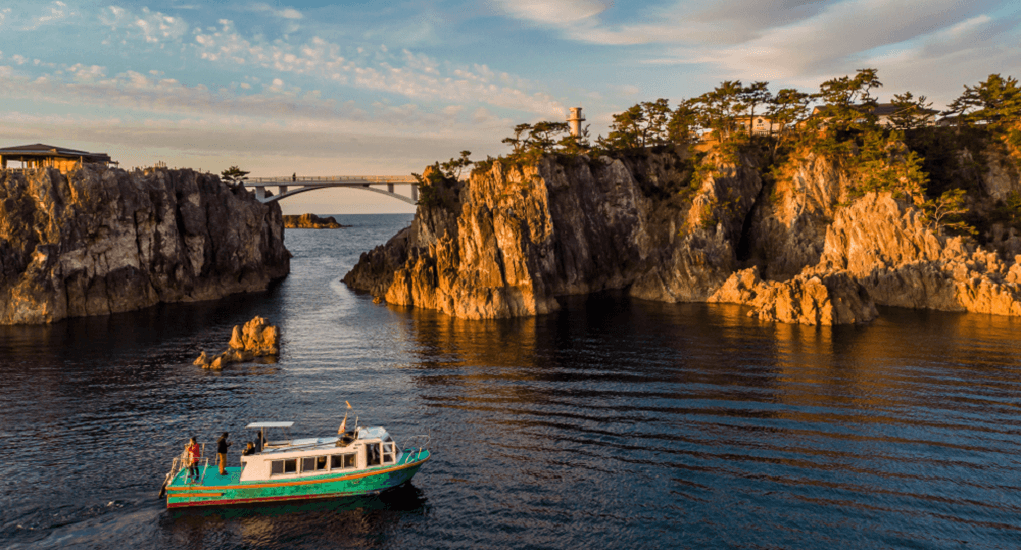
Photo by unterwegs on Shutterstock
Exciting Attractions
Summer is the ideal time to visit Sado Island. Not only for the warmer weather, but for the range of opportunities and events. Every August, there is the Earth Celebration Festival, an annual festival focusing on drumming, nature, and traditional Japanese culture.
For some history, you can visit Sado Kinzan Gold Mine and Nishimikawa Gold Park. Learn more about Sado Island’s gold mining past which helped shaped the island into the tourist destination it is today. Just don’t expect to find much if you’re in the prospecting business!
You can travel the Sea of Japan in a wooden washtub, known as tarai-bune, and witness first-hand the beautiful clear sea waters and rocky shores of Niigata.
Sado Island can only be reached by a ferry called Sado Kisen. There are three different ports that you can take the Sado Kisen ferry from: Niigata-Ryotsu, Naoetsu-Ogi, or the Teradomari-Akadomari routes.
However, not all routes run all year long. The most popular way to get to Sado Island is the Niigata-Ryotsu route because it rdoes run year-round. It also runs at least ten times daily, so it’s easily the fastest way to the island. There are more options to get to Sado Island as well by using the Niigata-Ryotsu route. Passengers can either use a jetfoil or a car ferry that allows them to bring their own vehicle, which helps with navigating the island.
In general, we recommend giving yourself at least 2-3 days to experience everything the island has to offer, and staying overnight is a possibility (more on that in a bit).
Natural Splendors
Not only does Sado Island have many tourist attractions, it’s also a great destination for those who like outdoor adventures, making it an excellent place for mind detoxification. The island boasts picturesque beaches, cascading rice paddies, and winding mountain roads.
Tourists can enjoy water sports, cycling, and camping all across Sado. There’s also great hiking and swimming opportunities on the island. There are scenic driving routes like the Osado Skyline Route around the island. As mentioned, bringing your own vehicle is possible. For those who enjoy driving around the Japanese countryside, this is a great and relaxing destination!
Finally, a visit to Sado Island wouldn’t be complete without going to Toki Forest Park. There, you can observe rare ecological species known as Toki or Japanese crested ibis. These birds nearly became extinct as many were sacrificed for their feathers to be used in futons.
However, recent rehabilitation efforts and breeding has made it possible for tourists to see these rare species in the wild across Sado Island. The best way to see Toki is in the Forest Park, as it is their ideal habitat. Not only can you see them in person up-close, but you can also learn a lot more about them here.
Delicious Delights
If you’re looking for a multi-day excursion to Sado, there are many traditional ryokan inns that tourists can stay in for a night or two. This gives you the opportunity to relax in a hot spring bath and enjoy meals featuring Sado Island’s famous deep-fried amberjack and rice.
Tourists can also enjoy Sado Island’s award-winning sake produced from the rice grown on the island by paying a visit to Hokusetsu Brewery. Enjoying hot springs and hot sake is the perfect way to cap off an exciting and relaxing adventure to Sado!
Sado Island is a place definitely worth visiting. Hop on a ferry, see the sites, enjoy the nature, and taste the many delicious local foods. Your next vacation will be an unbelievable and unforgettable experience. But don’t just take our word for it- start planning your trip to Sado today!
Photo Credits:
Additional photo: unterwegs on Shutterstock
All other content (text) created by the original author and © 2021 MUSUBI by Borderlink
Top photo: Matthew Petersen, used with permission
With summer behind us and fall in full swing, it’s as good as time as any to start planning our next adventure. Cooler temperatures and changing leaves invite us to spend our time outdoors. But, with so many places and so little time, where should you go? How about an Onsen? I will share my favorite one in all Japan; a place where you can get away from worries and enjoy nature. It’s also a place where you can experience an ancient part of Japanese culture as it slowly changes. Let me share with you the wonder of Takaragawa Onsen!
Tucked away in the Northwest corner of Gunma Prefecture, in the mountains that form the border with Niigata Prefecture, is an area called Minakami. This area has many mountain hotels and resorts for skiing, and several onsen. By far, Takaragawa Onsen is the best. There are many reasons for this.
For starters, there is an attached Ryokan on the property. Second, the hotel reservation is only optional; you do not need a reservation to use the onsen. Third, it has gender-separated baths as well as mixed baths. Have no fear, wearable bathing towels are available to rent and required to wear in the mixed bathing area. The fourth reason is the nature. Let me share some more details…
Staying at the Ryokan
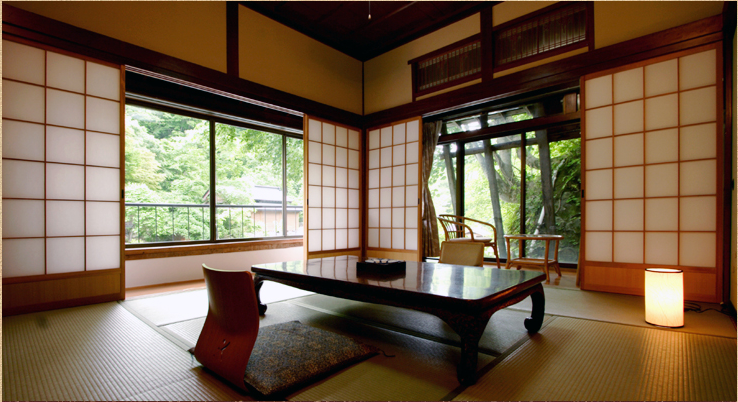
Photo Credit: Takaragawa Onsen
I’ll be honest, I have not stayed at this Ryokan yet, but I am planning to on my next trip. Driving in the mountains can be stressful. In the past, I only used the onsen briefly for a few hours, and then got back in the car, and went home So, the effect of the onsen was short-lived. Planning ahead, I would like to reserve a room at the Ryokan and enjoy the meals that are prepared with local food.
Fall is harvest time in Japan, and I love the variety of freshly-harvested and prepared foods. In our schools, we experience a small taste of this. If you notice, the school lunch menu changes with the seasons. This is true of the meals served at Ryokans, with seasonal specialties topping the menu.
The Ryokan also has its own entrance into the onsen. Staying at the Ryokan allows you to enter the onsen after it closes the doors to the public. Why not plan ahead and extend your relaxation?
Maybe you don’t have the time to extend your stay, that’s perfectly fine. The onsen itself is open to the public for “one day bathers” too. When you arrive at the big parking lot, you will see a bridge that goes to the Ryokan. Don’t cross it. Instead, just go to the other building. As of March 2020, the fee was 2000 yen for adults (junior high age and up) 1500 yen for elementary age, and preschoolers were free. This fee also includes the wearable bathing towel. One day bathers can use the bath from 9:00am to 5:00pm.
And now, the Onsen itself
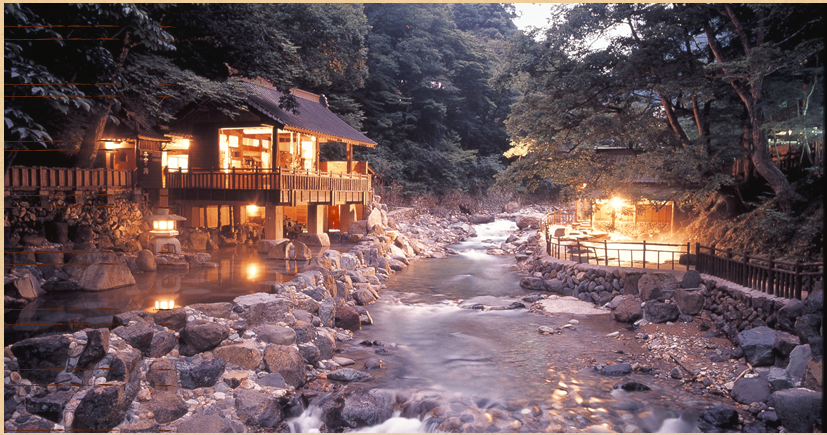
Photo Credit: Takaragawa Onsen
Onsen culture has a long history in Japan. Different areas have different rules. Understanding these rules is important. For me, the main idea is to enjoy nature’s gifts while soaking your troubles and worries away in a hot spring. The onsen is supposed to be fun, safe, and relaxing.
For these reasons, the onsen offers gender-separated baths, as well as a mixed gender bathing area for families who want to enjoy the experience together. As mentioned, in the mixed bathing area, the wearable towel must be worn at all times.
This mixed bathing area is one of Japan’s largest outdoor baths. Takaragawa Onsen has three separate pools, and each is unique. The first one you see after changing clothes is the largest and deepest. It is also the hottest one. In this pool you are more likely to find families enjoying themselves. There are many rocks to sit on, and many interesting sculptures and water features to look at.
The second pool is a little shallower and cooler than the first. It is a good pool to enter first, as it prepares your body. It is also in the middle of the area, so it serves as a great meeting place. It is also easy to go to the gender-separated baths from here, if you prefer.
The third pool is across the river, on the Ryokan side, but you can access it by crossing a bridge. This pool is the shallowest, and the temperature varies. About half of it is under a covering that blocks the sun or rain. This pool offers the best view of the river.
Seeing families, friends, and everyone having fun is great. It’s relaxing in a way not often seen in the media, and it is drastically different from the busy lifestyle we see in cities like Tokyo. This side of Japanese culture is truly beautiful. In fact, it is as beautiful as the nature that surrounds the onsen.
As I mentioned before, the onsen is tucked away in the mountains. Surrounding the onsen is old forest with trees that come down to the pools, and all the way down to the river. The Takaragawa River runs through the mixed bathing area. Not only can you hear the river flowing, but you can feel its power as you sit in any of the pools. It is a strong but soothing constant rumble that helps your muscles relax.
From every pool, you can let the sound of birds and the river overpower the sound of people talking. You can watch the trees and leaves sway in the wind. It really is a great way to soak your worries away.
The Ryokan and Onsen industries have been hurt by the pandemic. It would be sad if this beautiful piece of Japanese culture disappeared. Before the pandemic, it felt like onsen all over were trying to become more foreign-friendly. I look forward to visiting Takaragawa Onsen again, and pray it survives the pandemic. Let’s hope this effort towards sharing Japan’s beautiful onsen culture does not go to waste.
Photo Credits:
Top photo: Matthew Petersen, used with permission
Additional photos courtesy of Takaragawa Onsen (sourced from 1 & 2 ) Be sure to check them out!
All other content (text) created by the original author and © 2021 MUSUBI by Borderlink
Top Photo by Satria Hutama on Unsplash
If you’ve ever thought about coming to Japan, there are a few things that you need to know before you do. Take you shoes off when entering someone’s home. Learn how to use chopsticks. You know the drill. But what you may not be familiar with is proper train etiquette, as there is such a thing. While some of it can be summed up as “basic common sense”, some of it might be different than what you’re used to in your own country. Here’s the basics:
Don’t: Talk on the Phone
 Simply put, when you’re on the train (or a bus), don’t talk on the phone. This may sound a little strange, as obviously talking to other people on the train is fine. So why shouldn’t talking on the phone be allowed?
Simply put, when you’re on the train (or a bus), don’t talk on the phone. This may sound a little strange, as obviously talking to other people on the train is fine. So why shouldn’t talking on the phone be allowed?
There are two main reasons for this. The first is that while talking on the phone, some can talk louder than they may usually do in person, disturbing other passengers. On occasion you may see someone on the phone, and you will most definitely hear them.
While taking a quick call at a station stop is generally overlooked, talking at full volume in a crowded train in motion is not going to endear the speaker to anyone.
The second and more important reason is that the phone signals may interfere with pacemakers and other medical equipment some of the other passengers need to live. If you absolutely must speak on the phone, try to avoid standing near the priority seats (at either end of a train car) where these types of passengers would be most likely to sit.
The proper thing to do though is simply wait until your next stop and return the call on the platform. In this day and age, sending a text when someone doesn’t pick up is pretty much accepted.
Do: Look at Your Phone
 On the other hand, using your phone silently (or with headphones) isn’t just accepted, it’s practically essential. In any given train care, at least 75% of the passengers seem to be staring at their phone reading, texting, watching a video or playing a game. It’s the ideal way to pass the time, especially as books can be somewhat cumbersome.
On the other hand, using your phone silently (or with headphones) isn’t just accepted, it’s practically essential. In any given train care, at least 75% of the passengers seem to be staring at their phone reading, texting, watching a video or playing a game. It’s the ideal way to pass the time, especially as books can be somewhat cumbersome.
Listening to music (or sound from a video) is fine, but be mindful of the volume level. Also, know that it can be difficult to hear over the sounds of travel and background noise (as talking to friends/colleagues is, of course, completely OK).
When you exit the train, be sure to avoid walking and looking at your phone- like many places in the world, accidents have resulted from it and is frowned upon or becoming outright banned in some areas. If you need to check GPS or a map app, find a wall to stop at or a less crowded area to move into.
Don’t: Eat and Drink (Most of the Time)
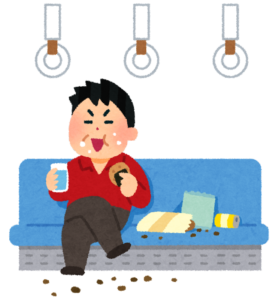 This one should be a given in this post-COVID-19 world, but chances are that as normalcy slowly creeps back into our lives, you may see times when it is ignored. As we have touched on before, eating while walking is something of a faux pas in Japan, but this also extends to eating on the train, even while sitting.
This one should be a given in this post-COVID-19 world, but chances are that as normalcy slowly creeps back into our lives, you may see times when it is ignored. As we have touched on before, eating while walking is something of a faux pas in Japan, but this also extends to eating on the train, even while sitting.
Eating can be a messy activity even at the best of times, and you wouldn’t want someone spilling crumbs all over you, right? While drinking from a PET bottle gets a little bit more of a pass, in general try to avoid making a habit of it. Nobody wants to accidentally spill their drink all over a crowded train.
The big exception here is that when in train cars with forward-facing individual seats (such as the Shinkansen) it is encouraged to eat and sample the many regional station-specific obento and snacks. Even alcohol (in moderation) can be consumed openly. Just use common sense; you would eat on an airplane but probably not on a crowded subway, right?
Do: Mind Your Bags
 While Japan is still generally a safe country and pickpocketing is a rarity, it’s always good to exercise caution and mind your bags on a crowded train. But wearing your backpack on the front side is beneficial for another, more immediate reason: you won’t risk accidentally hitting someone behind you!
While Japan is still generally a safe country and pickpocketing is a rarity, it’s always good to exercise caution and mind your bags on a crowded train. But wearing your backpack on the front side is beneficial for another, more immediate reason: you won’t risk accidentally hitting someone behind you!
Having more control over your personal space & belongings helps ensure your commute is a smooth one. You can also use the overhead racks if they are present and available (make sure not to forget your bags though!)
When you have larger luggage, people will generally understand if you take up a little more space. Try not to become an obstacle though, and always keep luggage on the overhead racks or floor in front of seats (and not on them, obviously).
Don’t: Be a Space Hog
 When sitting on a train, try to take up as little space as possible so that others may also sit. As social distancing practices begin to fade, people are much more inclined to fill up the seats. So be aware that if you decide to sit, you’ll most likely be shoulder-to-shoulder with others.
When sitting on a train, try to take up as little space as possible so that others may also sit. As social distancing practices begin to fade, people are much more inclined to fill up the seats. So be aware that if you decide to sit, you’ll most likely be shoulder-to-shoulder with others.
You probably have heard about how some won’t sit next to you out of fear of having to speak English, or some other imagined reason. We can tell you that 99.9% of the time that isn’t the case and people would rather sit than stand because they’re afraid of sitting next to a non-Japanese person. But there are times you might have an open seat next to you, for whatever reasons (the closest passengers may be about to exit at the next stop, for example).
Even if you’ve got the free space, don’t be that guy in the picture taking up more than he needs. Stay compact and allow others to sit if they wish- most of the time, others will do the same courtesy for you. And if you happen to be a larger person who’s going to take up a little more room naturally, well, just do the best you can!
Do: Offer Your Seat
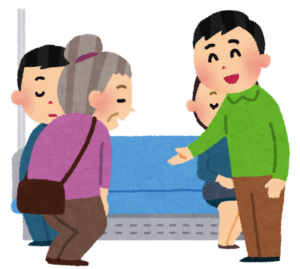 Every so often the opportunity comes up to be a good Samaritan and increase that invisible honor ranking. Offer your seat up to anyone walking with a cane or crutches; pregnant ladies or those with infants; or any little old grannies (or grandpas) you see.
Every so often the opportunity comes up to be a good Samaritan and increase that invisible honor ranking. Offer your seat up to anyone walking with a cane or crutches; pregnant ladies or those with infants; or any little old grannies (or grandpas) you see.
Keep in mind many people even into their late 60’s and 70’s have no problem standing and may feel awkward if you see them as being *that* old, so assess carefully before giving up your seat. But in general it’s a pretty safe bet they’ll be appreciative. After all, everybody likes being able to sit down!
When riding any form of transportation in Japan, please keep these in mind. Unless you live in a more suburban/rural area and mainly commute by bike or car, chances are you’ll be taking the train a lot. It’s always smartest to practice good manners and help make it a smooth ride for everyone- including ourselves!
Photo Credits:
Top Photo by Satria Hutama on Unsplash
Additional Images: Irasutoya.
All other content (text) created by the original author and © 2021 MUSUBI by Borderlink
Detoxification is needed to wash out harmful toxins that damage our body. With all the negativity that we experience in our daily lives, we also need mind detoxification from time to time. Detoxifying is not just a physical improvement; it can also balance and fortify our thinking.
There are many ways to detoxify our minds. First, deep breathing to reduce tension that builds up from emotional difficulties. Second, taking a walk to lighten our mood. Next, running to boost our confidence, as well as screaming to “flush out” our repressed emotions. We can exercises to release “happy hormones” that reduce mental pain, and also cycle to refresh our mood.
One thing these all share in common: they involve getting out of the house and connecting with nature. If you really feel stressed out from school or work, go on a break and have a mind detoxification trip. My recommendation is to do it in the Tohoku Region. Tohoku is located in northeaster Japan above the Kanto region and consists of six wonderful prefectures: Fukushima, Miyagi, Iwate, Aomori, Akita, and Yamagata.
Rich in history and nature, any one of these are an excellent destination for your mind detoxification experience. A little more about each one:
Fukushima

Fukushima is the third-largest prefecture in Japan and located along the eastern coast. In the 10 years since the 2011 Earthquake and Tsunami, it has steadily recovered. Now, it’s more than worth your time to visit.
My recommendations are the coastal city of Iwaki (where you can get some excellent sea food and walk along the beach.) There’s also the city of Aizuwakamatsu. It is famous for many things, my favorite being Ouchi-juku seen above. You’ll enjoy walking around the traditional Edo townscape as your mind relaxes.
Miyagi
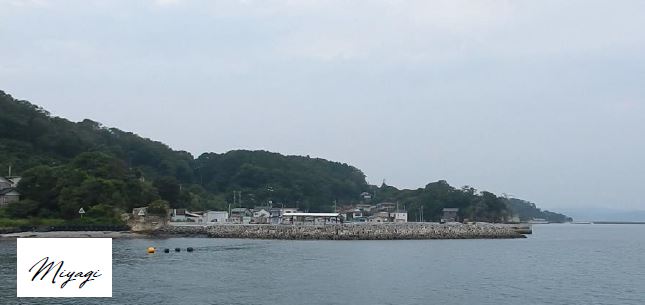
North of Fukushima, Miyagi is home to the major city of Sendai. But our destination today is a place called Matsushima. It’s an archipelago consisting of 260 tiny islands. These pine-covered islands are considered one the Three Most Scenic Views in Japan.
There are four renowned viewing spots from which to view the islands: Enchanting View, Grand View, Magnificent View and Beautiful View. As you go around to each one, enjoy the cool breeze and fresh air of the ocean, and let it cleanse your mind.
(Editor’s Recommendation: Afterwards, take some time to head east to the city of Ishinomaki. It’s worth the trip!)
Iwate
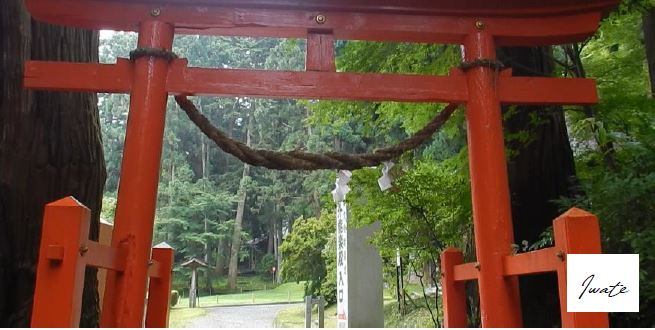
Iwate is famous for many national parks, with 5% of its total area dedicated to them. You can go on cycling and enjoy the peaceful ambiance of the forest. If you like quiet, contemplative healing, you can go to Chuson-ji, a famous temple in the town of Hiraizumi.
If you like to scream and get wet, go to Jodogahama Beach. It has crystal clear water and gentle waves. It’s a great beach for swimming, walking or just lounging. Iwate is the second largest prefecture in Japan (after Hokkaido) and also has the second-lowest population density (again, after Hokkaido). If you’re looking to get away from the massive crowds of Japan’s big cities, this is the place to visit!
Aomori
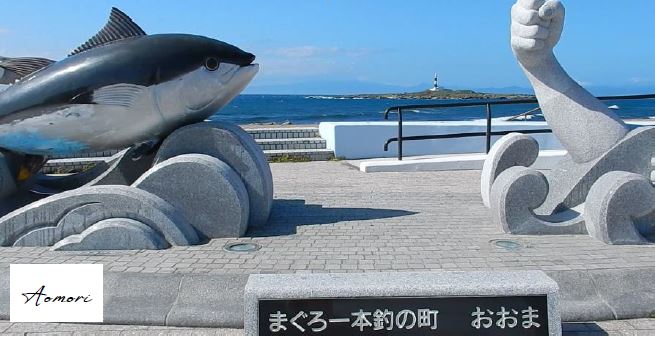
Aomori is the most northern part of Japan’s main island of Honshu. Surrounded by the sea on three sides, it is famous for “Oma Tuna.” First, you can enjoy a brisk jog along the coastline. Later, there’s volcanic hot springs in Towada-Hachimantai National Park, skiing at Mount Hakkōda, and much more.
It’s the perfect place to escape to during the hot days of August. Its location makes it a cooler spot than others in Japan, and you can enjoy the Nebuta Festival in the capital city of Aomori.
Akita
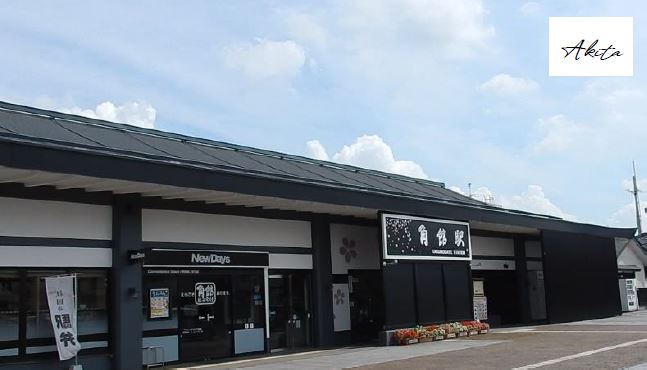
West of Iwate and south of Aomori, Akita is a mountainous area and the origin of the famous dog breed of the same name. There’s plenty to do here. First, the great Lake Tazawa has many hot springs. Next, Kakunodate town has a historic district of wooden samurai mansions.
You can walk around and explore them (some have become museums) and reminisce about old times. Lastly, you can visit the coastal capital city Akita, famous for the Kanto Matsuri. Whatever the case, there are plenty of places to relax your mind and body in Akita.
Yamagata
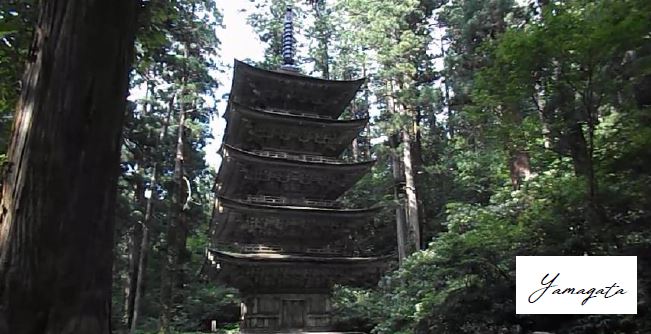
Finally, there is Yamagata in the southwest. You can go to the five story pagoda of Mount Haguro, one of the National Treasures of Japan. It’s a quiet place and great for meditation. There’s also the capital city of Yamagata. It is home to the hillside Yamadera Buddhist complex, centered on the 9th-century Risshaku-ji Temple. You can also see snow-covered conifer trees in the Mt. Zao ski resort area. Nearby are yet more hot springs and hiking trails as well as the color-shifting Okama Crater Lake.
All in all, the Tohoku region is a great place to explore and do some mind detoxification. Whether you visit one prefecture or all six, you can enjoy the aesthetic beauty of nature while also feeling refreshed and mentally renewed. In these often difficult times, taking care of your mind as well as your body is essential. Start thinking about where to take your mind detoxification trip today!
Photo Credits:
Additional images provided by the author, used with permission
All other content (text) created by the original author and © 2021 MUSUBI by Borderlink

